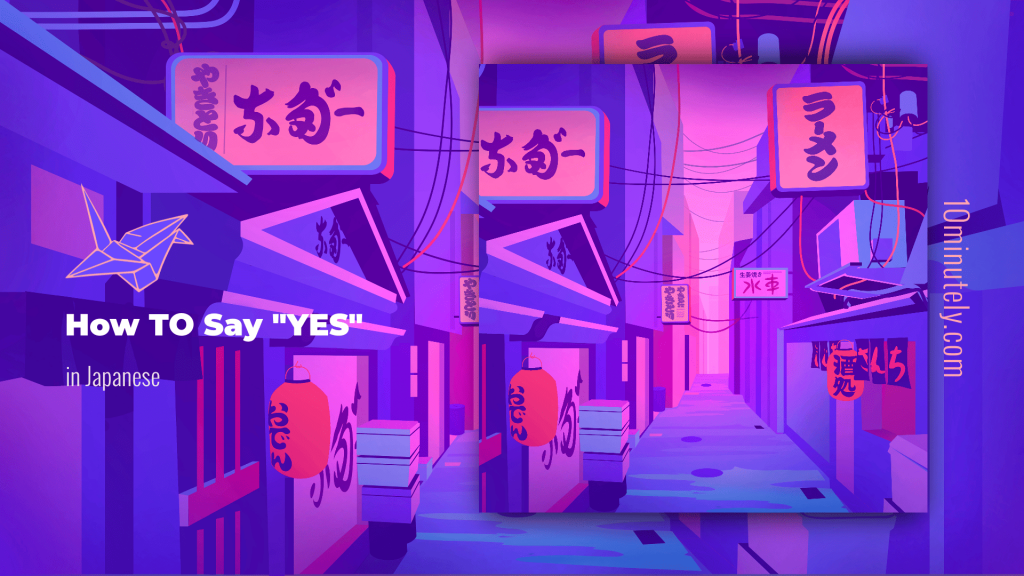
How to Say Yes in Japanese?
If you’re interested in learning how to say yes in Japanese, you’ll be delighted to learn that it is a fairly simple process. There are two main ways to say yes: the casual form, “Liao Jie”, and the more formal “Cheng Zhi shimashita.” Luckily, both forms have the same basic meaning. Here are some tips to help you get the hang of this essential language tool.
| How to Say Yes in Japanese
If you’re interested in learning how to say yes in Japanese, you’ll be delighted to learn that it is a fairly simple process. There are two main ways to say yes: the casual form, “Liao Jie”, and the more formal “Cheng Zhi shimashita.” Luckily, both forms have the same basic meaning. Here are some tips to help you get the hang of this essential language tool.
The first way to say yes in Japanese is to use the informal phrase “un un,” which is equivalent to “yes” in English. However, you should avoid using this word when speaking to authority figures. The second way to say yes in Japanese is to use ee, which is a more direct answer. In Japan, saying no is often considered rude and inappropriate, and people might apologize instead of using ee.
Using the correct form of iie is the most polite way to say no in Japanese. The word “e” is often mistaken for the word “yes” but has the same meaning. The iie ri is a much more formal way to say no, but it should only be used with authority figures. You should always follow your own discretion. Regardless of your level of proficiency in Japanese, remember that expressing no is important in order to communicate effectively in Japan.
When speaking Japanese, you should avoid using the word “no” in direct sentences. While it is perfectly acceptable to say “yes” in English, it is not appropriate to use un when dealing with people in authority positions. If you want to decline a request, it is polite to say “iie iie,” although this is not always considered acceptable in Japanese culture. If you are a beginner, it is best to avoid this option for a while.
| How To Say “Shut Up” in Japanese.
If you want to agree with someone, iie is a polite way to say yes in Japanese. It is often used to agree with another person and is a common greeting. When you’re trying to strike up a conversation, iie is the best way to use this phrase. But, it’s okay to drop the desu in some instances to make the statement more formal.
How to Say Yes in Japanese?
The word “yes” in Japanese is pronounced “hai.” This is a very formal word and is usually the most appropriate word for work. However, it is also important to note that the word “no” is often used as a polite answer. In most situations, you should use hai when you’re talking to a colleague. Otherwise, you should use ee whenever you are speaking with a friend or stranger.
Read More: https://10minutely.com/category/informations/
The second way to say yes in Japanese is a more informal way of saying it. Unlike hai, ee is a polite, but less formal than hai. It has the same meaning as hai but implies a higher degree of agreement and rapport. Finally, un is the least formal word to say yes in Japanese. It’s a common way to confirm yes in a formal setting.
The most formal way to say yes in Japanese is to say “hai.” Visit here This word is the standard way of saying “yes,” but it can sound a little stiff in certain situations. If you’re trying to learn the language, wikiHow’s article on how to speak yes in Japanese will give you a good foundation. It will help you get started on a positive journey. The key is to keep practicing!
The third way to say yes in Japanese is to try “mochiron” when you’re speaking with Japanese speakers. You can use it to acknowledge a boss. It is a popular way to acknowledge a request for a favor. In a formal setting, it expresses that you’re willing to do whatever the other person says. If you’re talking to a native Japanese speaker, you can say “riyoukaidesu” to confirm your agreement.
The last way to say yes in Japanese is by asking someone to answer a question. You can either use the word hai to ask a question or ee to answer a negative question. If you’re asking for a favor from a Japanese speaker, it is best to learn how to say yes in Japanese. Several ways to say yes in Japanese will vary depending on your level of politeness and the person you’re speaking to.


